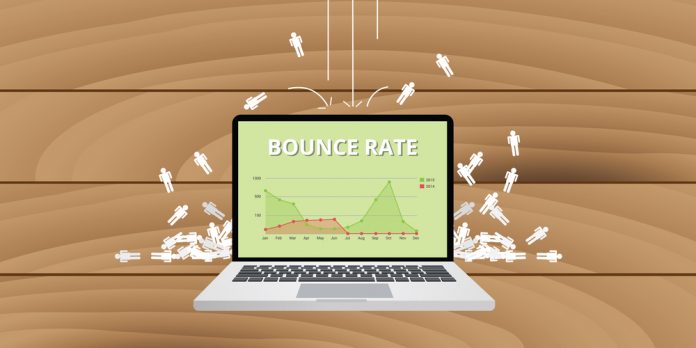Have you been working hard on your email marketing, but are struggling to see results? While email marketing can be very effective, results can be all across the board.
However, email marketing is still a powerful tool to take your business to the next level. In fact, 66% of businesses say that they use email marketing to communicate with leads and promote their business. Additionally, nearly 40% of businesses say that they send emails at least once a week.
But, what if people aren’t engaging with your emails? What if you’re experiencing a high bounce rate? If you’re looking to change things around, read on to discover the top things you need to know about email bounce rate.
1. What Is Email Bounce Rate?
First things first, what exactly is email bounce rate? An email bounce refers to an email that is returned to the sender because it can’t be delivered.
There are two types of email bounces: soft bounces and hard bounces. Soft bounces are usually just temporary issues that take a quick fix. A soft bounce is due to something such as a full inbox or a server that’s down.
However, a hard bounce is a bit more of a problem. The message will hard bounce if the sender’s address does not exist. Oftentimes, this indicates that the recipient’s server is classifying your email as spam or junk.
If you leave hard bounces untreated, it can have a serious effect on your email marketing campaigns. Hard bounce contacts should be removed from your email contact list and never sent again.
Email Bounce Rate vs Website Bounce Rate
It’s important to note that email bounce rate is very different than website bounce rate. While email bounce rate refers to messages that are undelivered, website bounce rate refers to how people engage with your site. If someone lands on your web page and does completely nothing before leaving, then they’ve “bounced” off of your site.
Even doing something as simple as clicking on a menu item means that the user hasn’t fully bounced from your site.
Email Bounce Rate vs Click-Thru Rate vs Open Rate
It’s also important to understand that an email bounce rate means something different than the click-thru rate and the open rate.
The open rate refers to the number of emails that are opened compared to the number of emails that you sent. The click-thru rate refers to how many people clicked on a link in the email.
The average email open rate is between 15 and 25 percent, while the average click-thru rate is about 2.5 percent.
2. What Is an Acceptable Bounce Rate?
So, how often should you be dealing with bounced emails? Many people are surprised to learn that your email bounce rate should be much lower than your website bounce rate.
Generally speaking, an acceptable website bounce rate is anywhere from 26 and 70 percent. An acceptable email bounce rate, on the other hand, is between 2 and 5 percent. Anything above 5% should be a major cause for concern.
However, it’s also important to note that bounce rates may vary slightly based on your industry. The electronic and computer industry has the highest hard bounce rate, while the entertainment industry has the lowest hard bounce rate.
3. How Do You Improve Your Email Bounce Rate?
Luckily, there are things you can do to improve your email bounce rate. These include:
Requiring Double Opt-In for New Contacts
One of the best things you can do to ensure you have a low bounce rate is to require double opt-in for new contacts. This means that instead of allowing new leads to enter their email address once to receive emails, they’ll need to add it twice.
Or, you can do an opt-in where once the email is entered, you send an automated email to their inbox. To verify that they gave the correct email, they’ll need to click on a link from the message that you just sent them.
Scrub Your Email List on a Regular Basis
Scrubbing your email list on a regular basis is another great way to improve your bounce rate. Just because your email list is 100 percent accurate this year doesn’t mean it’ll be as accurate next year.
Your contacts could change or they could delete their email addresses. Or, if you’re working with B2B customers, they could get a new job and with it, a new email address. If you need to validate your B2B customers via email, we suggest using this resource.
Luckily, there are third-party sources out there that allow you to scrub your email list. These services evaluate your email lists to make sure your contacts are real and all of your email addresses are valid.
Make Sure Your Email Doesn’t Look Like Spam
As we mentioned earlier, a lot of hard bounces occur because emails are sent to the spam or junk folder. The best way to ensure this doesn’t happen to you is to make sure your emails don’t look like spam.
Close to 50% of sent emails are spam, which translates to over 14.5 billion spam messages per day. It’s no wonder so many people are wary of spam messages and use spam filters. To ensure you get past these spam filters, you need to:
- Make sure your emails don’t contain formatting issues
- Make sure your emails don’t contain broken images
- Include your contact info and address in the email footer
- Avoid words associated with spam, such as “apply now”, “bargain”, “avoid bankruptcy”, “billing address”, “brand new”, and cancel at any time
You can see a full list of words you should avoid by clicking here.
Are You Ready to Improve Your Bounce Rate?
Now that you’ve read this guide on email bounce rate, it’s time to make moves so you can improve your bounce rate and your email marketing campaigns. Pretty soon, your campaign results will be improving.
Be sure to check back in with our blog for more email marketing tips and tricks.
Find a Home-Based Business to Start-Up >>> Hundreds of Business Listings.

















































